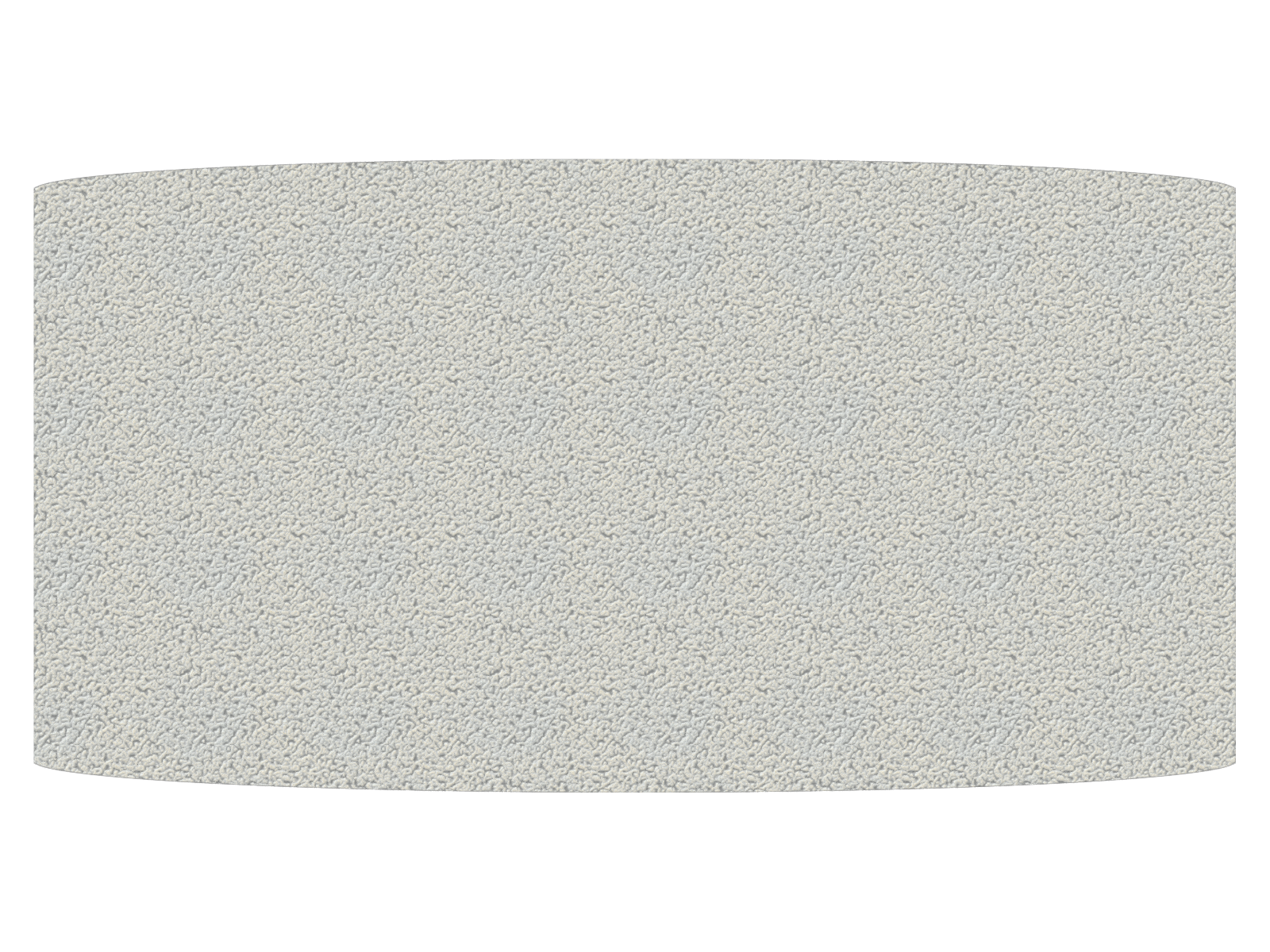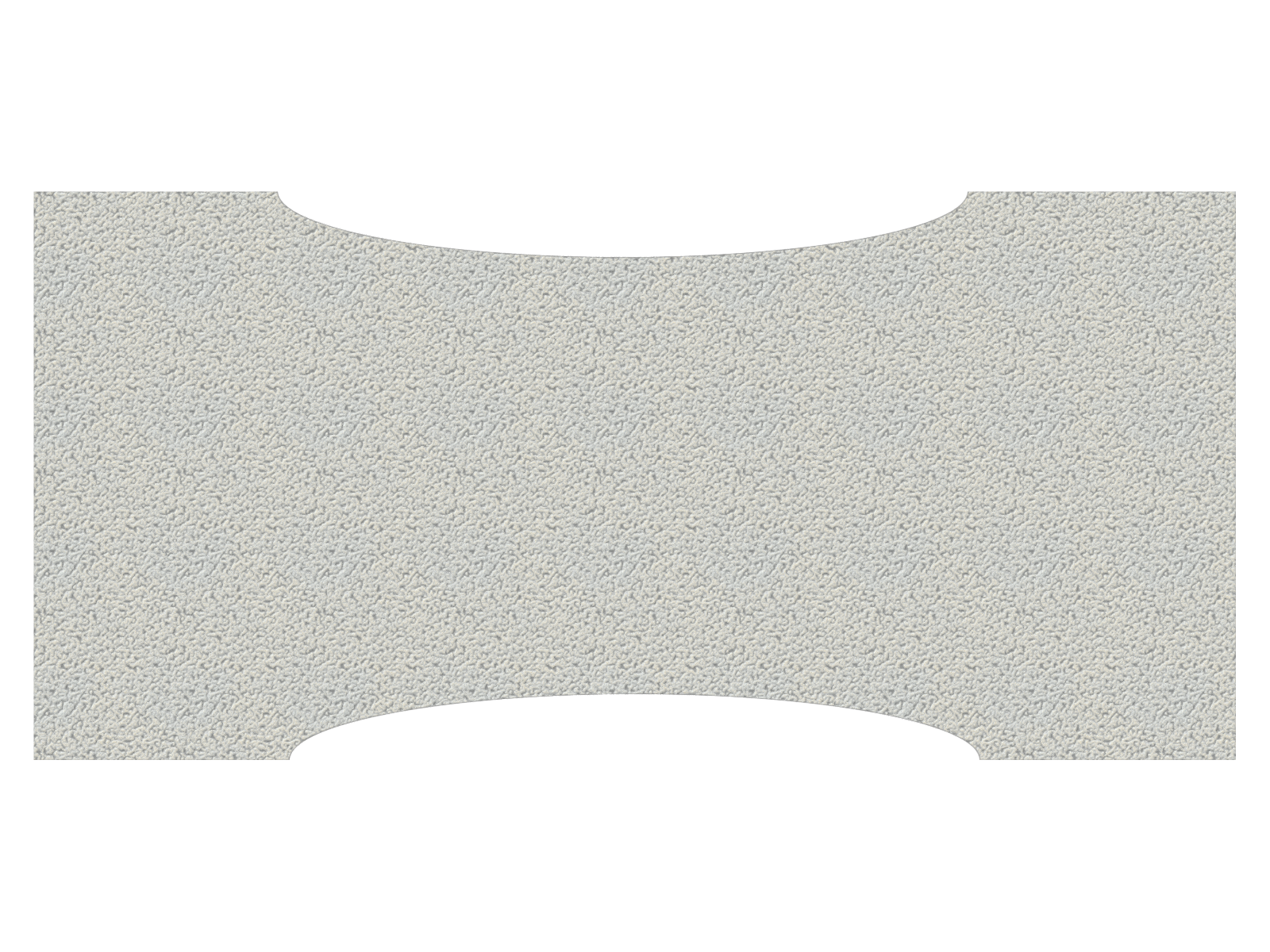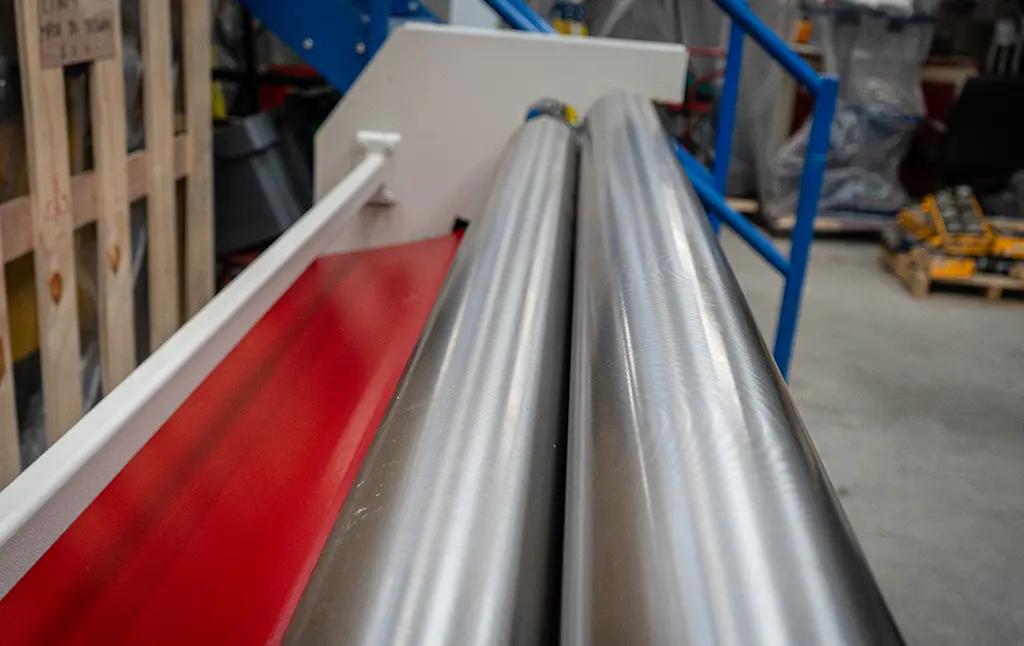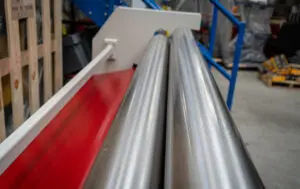When working with sheet metal and plate bending, precision is everything. Whether you’re rolling a cylinder for a pressure vessel or creating curved sections for structural work, the quality of the finished piece depends on the accuracy of the bending process.
One of the most important, yet often overlooked, factors in achieving this accuracy is plate roll crowning. Without proper crowning, even the best-built plate rolls will produce inconsistent bends, leading to wasted material, costly rework, and frustration on the shop floor.
In this article, we’ll explain what plate roll crowning is, why it matters, and how to ensure you get consistent results every time.
What is Plate Roll Crowning?
Crowning is the deliberate shaping of the rolls on a plate rolling machine to compensate for natural deflection under load.
When a plate roll bends metal, enormous pressure is applied through the rolls. Because the rolls are supported at their ends, the centre tends to deflect, or bend slightly away from the plate, under heavy loads. This results in uneven pressure:
-
High pressure at the ends of the plate
-
Lower pressure in the middle
The consequence is a rolled cylinder that isn’t uniform. Typically, this appears as a barrel effect, where the middle has a larger diameter than the ends. This creates problems with assembly, welding, and overall quality.
To counter this, machines are supplied with a very slight barrel shape into the top roll (and sometimes the lower rolls). The centre of the roll is made marginally larger in diameter than the ends, which evens out the pressure across the full width of the plate.
The result? A perfectly uniform curve along the entire length of the material.
You can explore our full range of Sheet Rolls and Plate Rolling Machines, designed with precision engineering in mind.
Why Crowning Matters
Without the correct crowning, you risk several common defects:
-
Barrel Effect – The centre of the plate rolls to a larger diameter than the ends due to insufficient crowning.
-
Hourglass Effect – Over-crowning leads to the opposite problem: the centre is too tight, while the ends are loose.
These issues don’t just affect appearance — they can cause serious fit-up problems, especially when parts need to be welded or assembled with tight tolerances. Scrap rates increase, rework times rise, and production efficiency suffers.
For companies working with expensive materials or large-scale projects, poor crowning can become a costly headache.

Barrel Effect

With Crowning

Hourglass Effect
How Plate Roll Crowning is Achieved
Crowning isn’t a one-size-fits-all feature. It needs to be carefully calculated based on several factors, including:
- Plate thickness and width
- Material type (e.g., mild steel vs stainless steel)
- Roll diameter and span
- Operating load and pressure
- Desired tolerances
Most modern machines are precision-machined at the factory with a fixed crown designed for their intended working range. The slight curve machined into the roll is usually invisible to the naked eye, but its effect is significant. Given that most rolls have a fixed amount of crowning, if a part is not coming out right there are simple steps you can take to fix this:
If a rolled part is outside of tolerance because of too much crowning compensation – creating an hourglass deformation – Increase pinch pressure
If a rolled part is outside of tolerance because of too little crowning compensation – creating a barrel crowning deformation – Reduce pinch pressure of the rolls
Some advanced models such as our range of MG CNC machines offer adjustable or dynamic crowning systems, allowing operators to fine-tune the crown to match different materials and applications. This is ideal for workshops handling a wide variety of jobs.
Crowning Beyond Plate Rolls: CNC Press Brakes
Crowning isn’t just important for rolling — it’s also essential in press brake bending.
When bending long sheets on a press brake, the ram and bed can also deflect under load. This leads to a part that is under-bent in the centre and over-bent at the ends, similar to the barrel effect seen in plate rolling.
To solve this, our CNC press brakes feature crowning systems, which apply compensation along the length of the machine. This ensures a consistent bend angle across the entire width of the material, even on very long parts.
If your workshop performs both rolling and folding operations, it’s worth exploring machines with built-in crowning technology.
View our full range of CNC Press Brakes, designed for precision and reliability.
Choosing the Right Machine for Your Needs
When selecting a new plate roll or press brake, always consider how crowning is handled. A machine that’s well-designed in this area will deliver:
- Better accuracy and repeatability
- Reduced scrap and rework
- Faster setup and production times
- Lower operating costs over its lifetime
At Selmach, we supply a comprehensive range of Sheet Rolls and CNC Press Brakes to suit all applications. Our machines are engineered with crowning systems that ensure consistent results, even on the most demanding jobs.
Our expert team can help you select the right equipment for your specific production requirements and budget.
Published 24th September 2025


